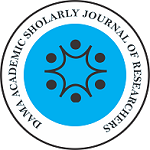Authors: Denok Indraswati1, Djoko Windu P. Irawan2
1&2Health Polytechnic of Ministry of Health in Surabaya, Indonesia
Abstract
Today, the use of pesticides from chemicals is the most applied way to control Aedes aegypti mosquitoes. The negative impacts of this method include environmental pollution, vector resistance and the death of other organisms that are not targeted by insecticides. Until now it has been known several plants that contain various active compounds that serve as insecticides. This study aims to analyze the differences in the ability to resist mosquitoes of several plant extracts: Canangium odoratum, Citrus aurantifolia, Eucalyptus aloballus, Melaleuca leucadendron, Cinamomum verum, Eugenia aromatica, Foenicum vulgare, Rosa sp., Cymbopogan nardus. This research was conducted in laboratories in four phases: (1) Collection of plants (2) extraction of plant material (3) Colonization of Aedes aegypti (4) biological test. The measure of the ability to resist was the number of mosquitoes that land on the feed. The data that have been collected was analyzed by Analysis of Variance test. The results of the data analysis showed that different concentrations (25%, 50%, 75%, 100%) resulted in differences in the ability to resist mosquitoes. Melaleuca leucadenron, Foeniculum vulgare, Rosa sp. And Cymbopogan nardus at concentrations of 75% and 100% had the same ability to resist mosquitoes, while Eugenia aromatica at concentrations of 50%, 75%, and 100% had the same ability. The order of ability to resist mosquitoes were: Eugenia aromatica, Foeniculum vulgare, Citrus aurantifolia, Rosa sp, Canangium odoratum, Cymbopogan nardus, Cinamomum verum, Eucalyptus aloballus and Melaleuca leucadendron. Eugenia aromatica had the greatest potential to be used as a repellent.
Keywords: Aedes aegypti, Plant extracts, Repellent

